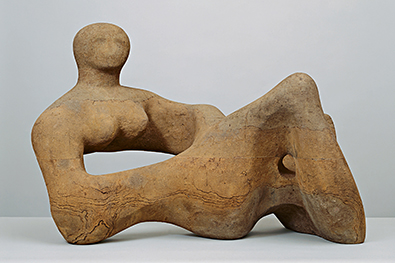Henry Moore’s reputation has suffered since his death in 1986. He has fallen somewhat out of fashion, and must himself be held partly responsible. In his later years he succumbed to economic temptation, both overproducing and over-reproducing his own work, in particular sanctioning multiple castings of his large bronzes. “Baubles for corporate plazas” was how the American sculptor Richard Serra contemptuously described them, just a couple of years after Moore’s death. Serra was speaking for a generation to whom Moore’s work itself seemed somehow corporate: a stifling and paternalistic expression of the modernist impulse, dull and fundamentally conservative, nostalgic for the monumental forms of academic public sculpture, and romantically attached to the undulating forms of the English landscape. He was simply daring to say what a lot of people already thought. What could be more irrelevant to the modern world and its concerns than a Henry Moore Madonna and Child, on a plinth, in front of an oil company’s headquarters?
“Henry Moore”, at Tate Britain, offers a salutory reappraisal of the artist’s achievements. Refreshingly modest in scale, the show focusses on Moore’s work from the 1920s until the 1960s – the work that made him famous in the first place, and established him, by general consensus, as the world’s leading sculptor. The works chosen for display have been selected with great care, and an exceptional sensitivity to Moore’s strengths. Every room has been painted a different rich colour, moss green, cobalt blue, Pompeian red, which gives each successive space something of the feel of a cabinet of curiosities. The emphasis is squarely on Moore as the maker of exquisitely fashioned, utterly covetable works of art. Rarely have the words “Do Not Touch” seemed more frustrating: these are sculptures that ask to be touched and caressed, to be felt with...


